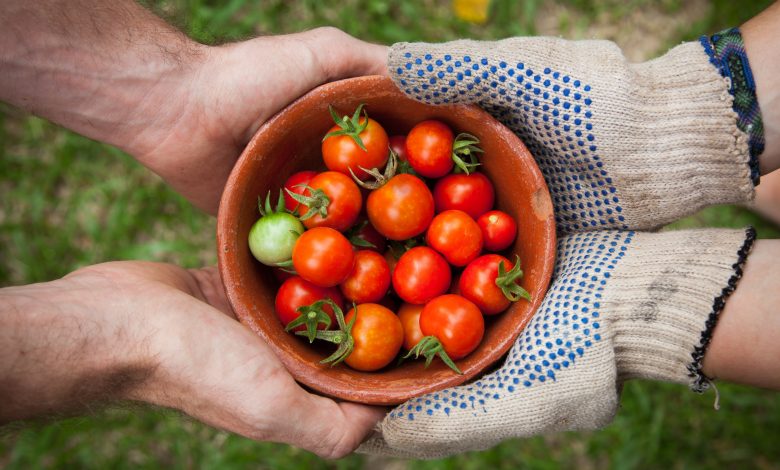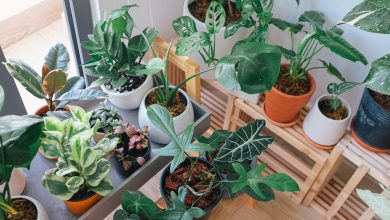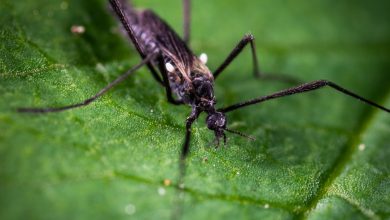How to Start a Community Garden

A community garden is an innovative way to bring nature and vegetation into a neighborhood or city. This type of gardening is not only meant to grow flowers and food, but it also brings people from all walks of life together to help contribute to improving their immediate environment. If you have ever been interested in what community gardening entails, the following article is going to give you a crash course on the unique planting method and all of its benefits. There is a reason why these gardens are appearing all across the country!
What is a Community Garden?
A community garden is a shared plot of land where a group of people comes together to sow and harvest flowers, vegetables, and other crops. These types of gardens can be seen in cities as a way to beautify surroundings, while providing food and enjoyment for the whole community.
Many people who live in metropolitan and urban areas don’t get the chance to watch a garden grow in their backyard. Green space is limited, and indoor gardens aren’t feasible. Community gardens provide an avenue for many to come together to collectively share their green thumbs and give back to their neighbors and beyond. These plots of land can last a lifetime when properly maintained. The reasons to start one in communities everywhere are abundant.
How Do You Start a Community Garden?
Starting a community garden is a step-by-step process. You do have to drum up some interest with your neighbors and fellow community members, but if you follow these steps, you could be closer than you think to breaking ground:
Make Conversation
The first step to a community garden lies in the talks you are having with those around you. Start planting the seed now by talking about planting. Let your neighbors know that you want to cultivate some land to grow flowers and vegetables for the community. Write down any questions or comments you encounter and start researching.
You may need to reach out to your local government to make sure community plots are allowed in your city. You need to fully understand the process before you begin planting. This activity includes any necessary permits, allowances, or fees.
Find Your Garden
When you have garnered enough volunteers to help, it is time to find some land to grow your garden on. If you can, choose a plot that is flat and has plenty of sun. If pickings are slim, you can also grow your crops in raised gardens beds. There are numerous possibilities, so don’t forget to think outside the box.
Have a group of community members go out to look for the right plot of land that can fulfill what you are envisioning. When you come up with a few areas, have a group vote on which plot to start your garden.
There may be grants and awards available for you to use when you start. Research organizations can also help fund part of your efforts. You can even ask local stores for support. They can supply the necessary soil, fertilizer, and wood to get you started.
Set a Date
When you are ready to start digging, set a date that works for the majority of the community to come and help. This time typically ends up being on the weekend. Check the weather for that particular day, and start sending out flyers, email blasts, and other notices to get everyone excited and ready for the big event. Everyone should come with supplies in hand. Shovels, rakes, gloves, and other tools are all necessary to start your garden.
Gardening Methods
You should all come up with a consensus on how you are going to construct your community garden. Usually, the plot is broken down into separate beds. You can have one set aside for flowers, one for vegetables, and one for herbs.
The most important thing at this stage is getting your soil primed for planting. Bring in fertilizer, compost, and other enriching agents to help set the perfect foundation for your crops. This initial process to get your garden beds ready may take several days.
At this point, you should also start your compost pile. Collect natural ingredients, such as fruit and vegetable rinds, coffee grounds, and grass clippings. As the weeks pass, you can maintain the heap and use the fresh compost on your garden soil.
When your soil is ready, you can start by sowing your favorite plants. Everyone can bring in their seeds and seedlings to plant. Divide everything into three groups: fruits and vegetables, flowers, and herbs. Organize a schedule for watering and maintaining the grounds. Depending on the size of your plot, you can use watering cans, hoses, or rain barrels.

Benefits of a Community Garden
Now that you have your community garden in place, what are some of the immediate benefits you are going to see by having this land in your area? The following list is going to convince you further to start one as soon as possible:
Good Food Source
When you have an urban or community garden, you can grow fruits, vegetables, and herbs of any kind. The produce is fresh and healthy, which is just what our bodies need. For those households that typically can’t afford fresh food due to finances or any other reason, they can regularly receive healthy fare when they are part of a community garden. These plots can help relieve some food insecurity that some families may feel on a day-to-day basis.
Cheaper Groceries
In the same vein as above, community gardens are generally cheaper than going to a grocery store. When you put the time and effort in to plant your garden, there is no need to worry about marked up prices when the beds begin to bear their fruit.
Also, overhead costs are minimal. Seeds and seedlings are not pricey, and other gardening supplies can be bought in bulk. When you spread the expenses among your community, the amount is even less out of pocket.
Beautifies Neighborhoods
When you plant beautiful flowers and plants on vacant land, you are eliminating wasted space in your community. A lot of times, especially in populated cities, trash and other rubbish accumulate where abandoned lots are. Clearing the land and installing a garden gets rid of eyesores and increases communal happiness.
Green space is hard to come by in a lot of urban areas. Creating a space where you can relax and enjoy the outdoors can improve the quality of life for all nearby neighborhoods.
Peaceful Retreat
A community garden can also provide a peaceful place where you can go to get away from all the noise and distractions a large city or town has to offer. As a result, stress decreases, and a newly found appreciation of your area is in place.
You can make your garden welcoming by including places to sit and enjoy the view. People in your neighborhood who are handy can put together benches and small tables in the shade for just that. Include garden décor that is colorful and vibrant. You want to attract as many people as you can to participate in the growing of the vegetation.
Clean Air
When you live in a densely populated city, the quality of air is typically not so great. Planting a garden that is full of fresh green foliage and vibrant flowers increases clean oxygen levels and reduces air pollution.
The plants also help with water runoff that occurs during rains and heavy storms. Runoff can contain pollution and toxins that can flow to your local rivers and lakes. A community garden helps to absorb the excess water before it comes into contact with these harmful pollutants.
Strengthened Sense of Community
Building a community garden allows you and your neighbors to get to know each other in an informal setting. As you help to plant and maintain the garden, you are going to be working alongside others who share the same gardening vision.
The connection you feel with the other neighborhood gardeners helps you to feel more invested in what you are doing. You get to see what all of your hard work has done for the community every time you walk or drive past the plot. Community gardens get you out of your house and into the streets to interact and appreciate others.
Healthy Routines
Gardening is a workout! As you dig, pull, and plant, you are using muscles and increasing your heart rate with every move. If you are looking for a non-traditional way to exercise, this may be an ideal way to get you back in shape.
While it is an excellent form of working out, you should never overexert yourself. Take breaks when necessary, and drink plenty of water as you sow and harvest the different plants in the garden beds.
Bridging the Gap
Growing your community garden can also provide a great way to reach out to the younger generation. As adults, we often don’t get many chances to work alongside our children and teens. You can encourage them to come out and help in the community gardens and learn new skills at the same time. Gardening is a great educational tool that shows where food comes from and how planting can help communities around the world.

Popular Garden Vegetables and Plants for Your Community Garden
There are many plants and flowers that you can include inside a community garden. The following lineup is some of the basic vegetation that can be included in yours:
Tomatoes
Tomatoes are a popular plant that comes in a variety of sizes, flavors, and colors. Adding these to your community garden is ideal, as they can give you robust crops all summer long. When you grow these, make sure you take care of the vines, as they lengthen and creep around. You want to install a tomato cage or support structure to help them grow as they should.
There are dozens of tomatoes to choose from. Heirloom, Amelia, and Beefsteak tomatoes are just a few you can include in your plot. As you maintain these plants in your garden, take care to make sure no worms or bugs are invading the plants. Tomatoes are known to attract some garden pests.
Sweet Corn
Sweet corn and summer go hand in hand. This warm-season vegetable should be a staple in any community garden. The tall stalks are a reminder of what is to come when the plant is ripe and ready to eat.
Corn grows best in the sun and should be picked at the peak of its maturity. A good tip to help keep its sweetness is to place the crop in boiling water immediately. This process captures the sugars that are in the kernels, as they can quickly turn to starch when off of their stalks.
Garlic
Garlic is a vegetable that many cooks love. The pungent aroma that comes from this plant is well known by many of us. When you plant garlic, it is best to do so in the fall. This method gives the bulb enough time to take root and sprout in the springtime. By mid-summer, you can harvest what you have grown in your garden. When in the ground, garlic takes care of the hard work. As a gardener, all you need to do is ensure the soil stays moist and well aerated.
Radishes
For all of you vegetable lovers, radishes are one of the easiest plants to grow and maintain in a community garden. Radishes can thrive in warm and cool weather, so if your outdoor garden is prone to an early frost, you can expect your radishes to still maintain their freshness and flavor.
When you plant radishes, they reach full maturity in about four to five weeks. The quick-growing vegetable does need some sunlight to grow and frequent watering. You can easily plant bushels of radishes that your community can enjoy for several months out of the year.
Strawberries
Strawberries are a delicious addition to your community plot. This fruit grows quickly in most regions when you plant the seeds by early spring. If you live in warmer climates, sow your strawberries in the fall to ensure they reach their maximum potential in the next growing season.
These plants do need at least eight hours of sunlight. When you start to see the plants bloom, that is a sign that fruit is on the way. Approximately one month later from this first blooming, you are going to be holding fresh and ripe strawberries in your hand.
Lemons
If you are looking to add trees to your communal garden, consider the lemon tree. Growing this type of vegetation isn’t difficult and can be rewarding when you see the fruits start to appear.
Lemon trees should ideally be planted in warmer climates. They are sensitive to colder weather and frost. Make sure you plant your trees close to shelter. This protects them from wind and other extreme weather conditions. The plants need full sunlight for the majority of the day. Soil should be slightly acidic, but they are also known to grow in other kinds of dirt. Water these trees sufficiently and prune to keep their shape and help them grow.
Lemons can take a few years from planting to yield edible fruit. If you are a gardener with patience, try having a tree in your community garden, and see where it takes you. When the trees are established and producing fruits, you can expect to have them return to your garden for years to come.
Kale
This vitamin-packed green and leafy vegetable has been in a lot of food-related headlines lately. They do well in cooler weather, so if you live in the northern part of the country, try planting a few of these.
Kale does take some time to grow. It takes nearly a year to harvest the vegetable when you plant seeds. Make sure they are in an area that receives a lot of sunlight and plenty of water. As you keep the dirt moist, you are going to notice the kale is much sweeter when it comes to eating it. Before you start plucking the heads for your dinner table, the leaves should measure about eight inches from soil to tip.
Beets
Beets are an often forgotten about vegetable. The crunchy crop can be planted after the first frost for a late spring harvest, or you can sow them in the summer for a fall harvest. They are a root vegetable, and they do well in warm and cold climates. For those who want something different in their community plot, try the beet.
Basil
Set aside some space in your garden for herbs. Basil is one of the best plants in this category to grow. There are a lot of varieties to choose from. You should include a handful when you are sowing the seeds. As the plant grows, make sure to cut the plant before it starts flowering. The blooms are a sign that it has stopped producing edible greens for you to harvest.
Cabbage
Cabbage is another natural vegetable to add to your garden. It grows in the most basic of circumstances and only requires regular watering and some sun. It is best to harvest cabbages at the first signs of maturity, but there is still some wiggle room for gardeners to get to it for a few days. Cabbages are resistant to wilting and garden pests. This vegetable can be cut in half and shared with others to further its contributions in the garden.

Best Flowers for a Community Garden
Flowers can also be a welcome addition to your community garden. If you decide to include blooms in some of your beds, make sure you are selecting flowers that don’t attract insects and pests. Here are some to consider:
Marigolds
Marigolds are a bright add-on to any flower garden. The fragrant plant comes in yellows, oranges, and other golden tones. When you smell a marigold, the fragrance is very distinct. The scent is beneficial for your plot, as it deters and repels mosquitoes and other bugs from ruining a perfect gardening day. You can plant this flower around your fruits and vegetables to keep the pests at bay.
Lavender
Lavender is a great flowering plant to have in your garden. It attracts bees, which is always a great thing to have. The sweet-smelling scent that comes from the plant comes from oils that can be found in its leaves. It is these essential oils that bugs and pests hate.
Plant lavender near your fruits and vegetables. They are a drought-resistant perennial that is perfect for summertime growing.
Petunias
Petunias are annual plants that come in a lot of fun colors. Pinks, purples, reds, and oranges are just a few hues you can choose from. The popular blooms are best known for their cone-shaped petals and a fragrance that reminds many of licorice.
Intrusive worms, aphids, and other insects detest this fragrance. However, with this flower, you need to take care that you aren’t attracting slugs. These garden pests are one species that love to feast on the plant.
Chrysanthemums
Chrysanthemums are flowers that keep roaches, ants, beetles, mites, and a myriad of other bugs away. If you could only have one bloom in your community garden, choose this one. These flowers contain pyrethrum, which is a natural bug repellant. Chrysanthemums are a bright addition to any urban or communal area. If you are looking for a summer or fall flower that lasts a long time, choose this well-known plant.

Community gardens are an excellent way to beautify your neighborhood while getting to know those who live alongside you. These gardens can brighten up any landscape and create food sources that otherwise couldn’t be attainable in more deprived areas. When you start a garden like this, you aren’t just building it for yourself; you are creating a legacy that can be appreciated for generations to come. Spread some joy in your neck of the woods, and start planning your community garden today.



